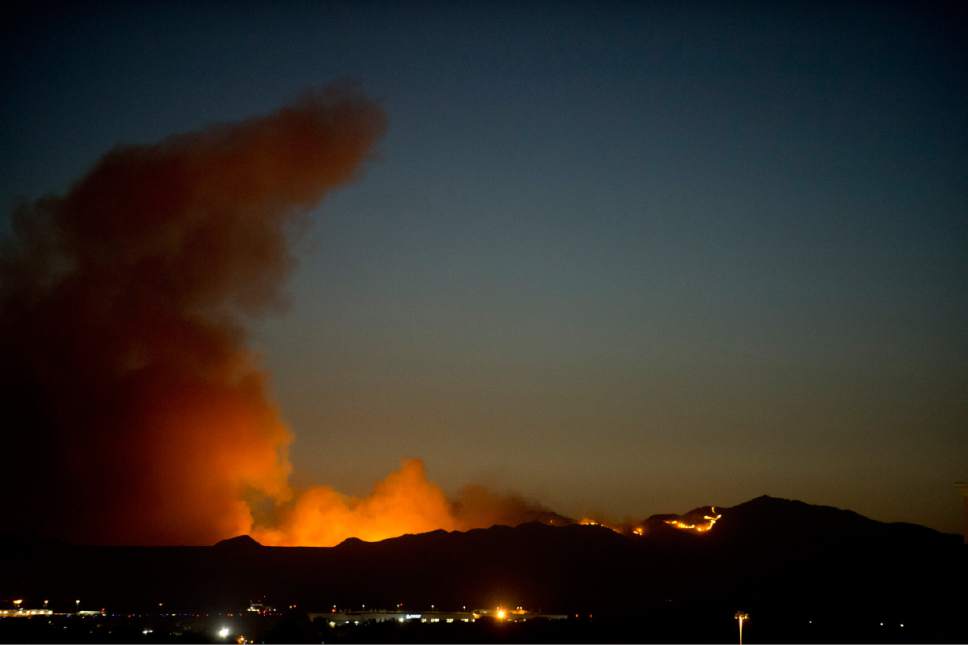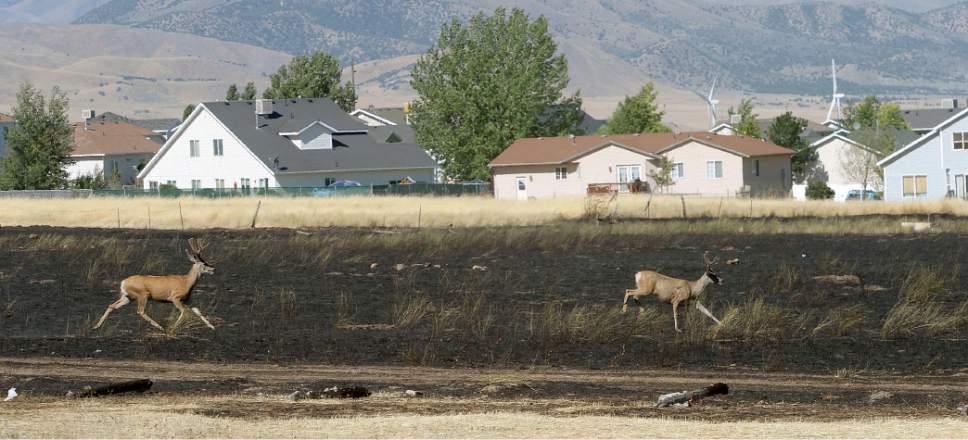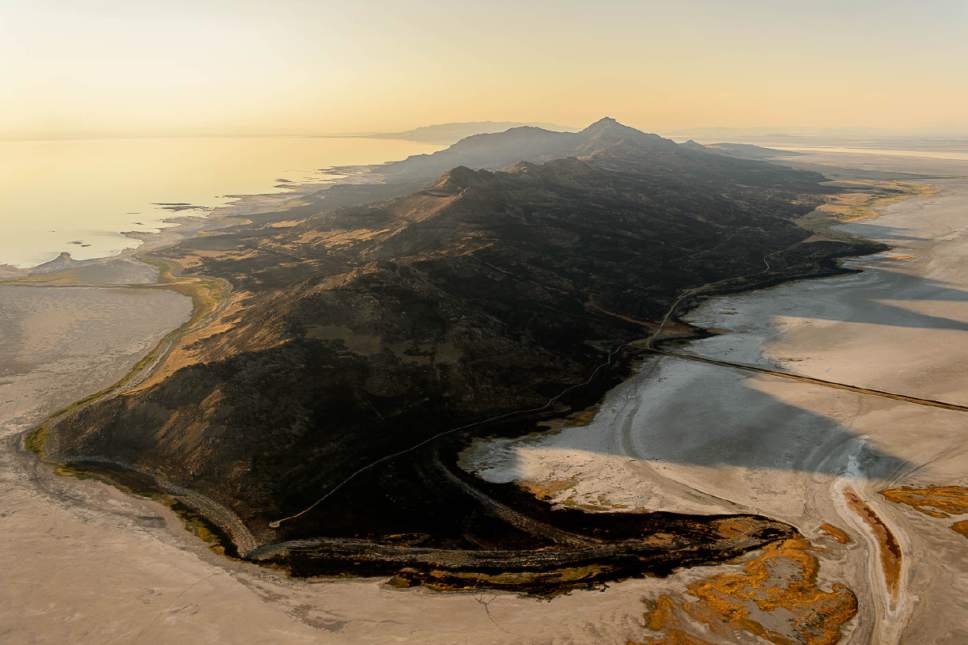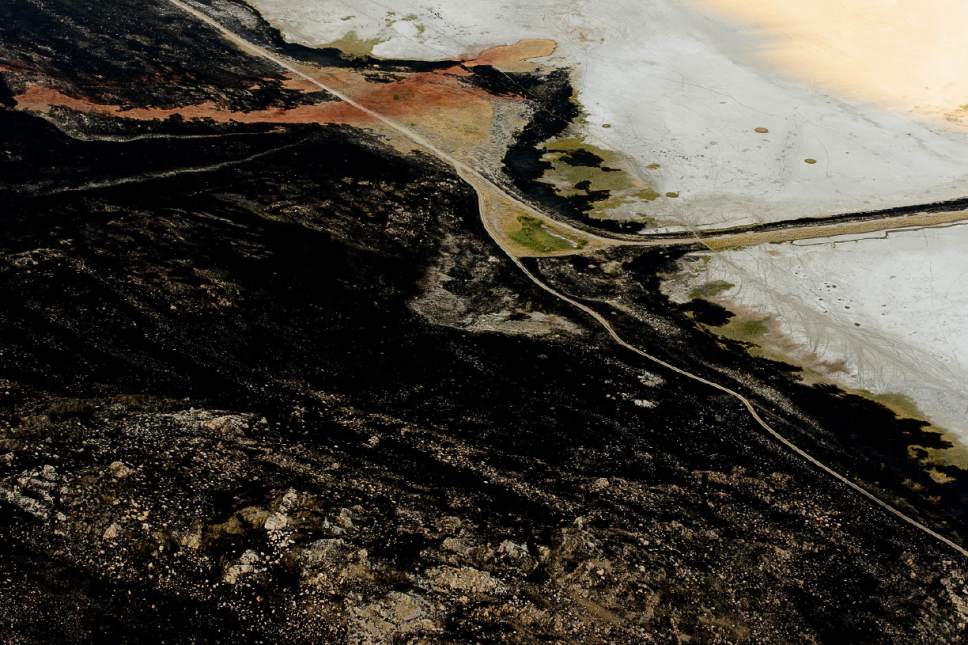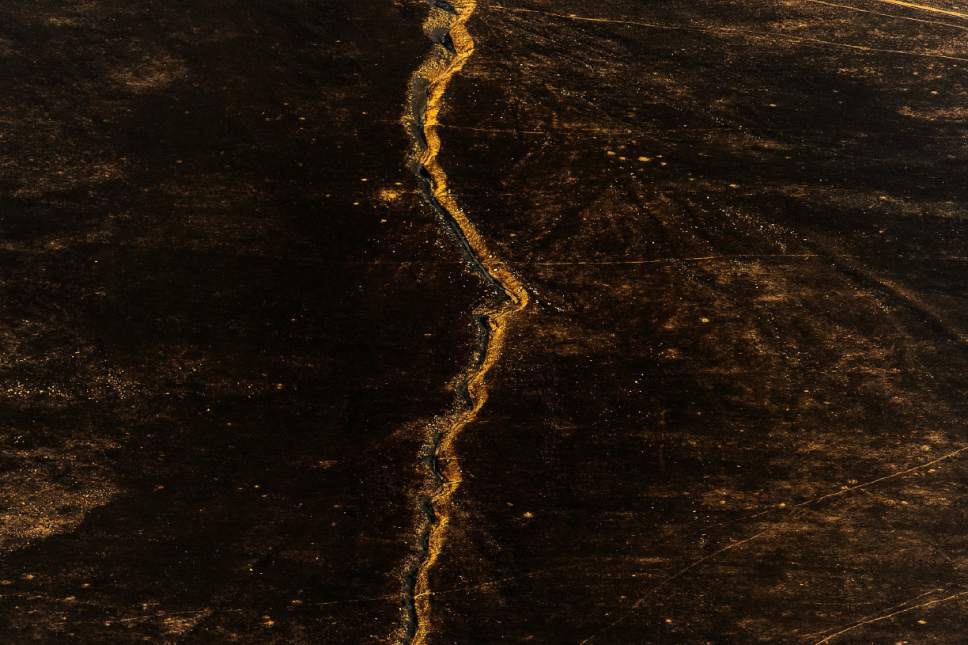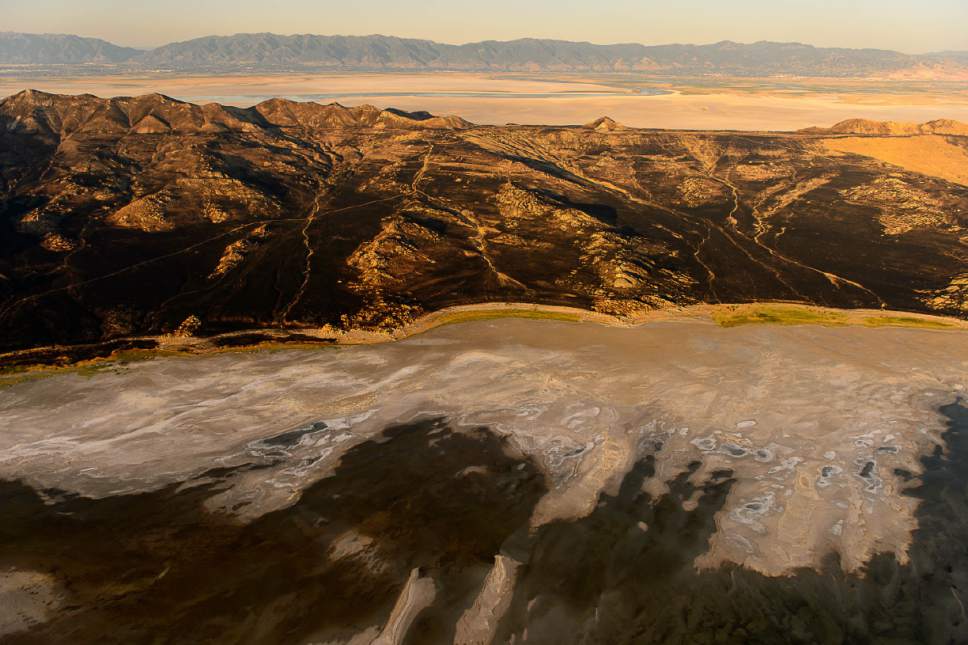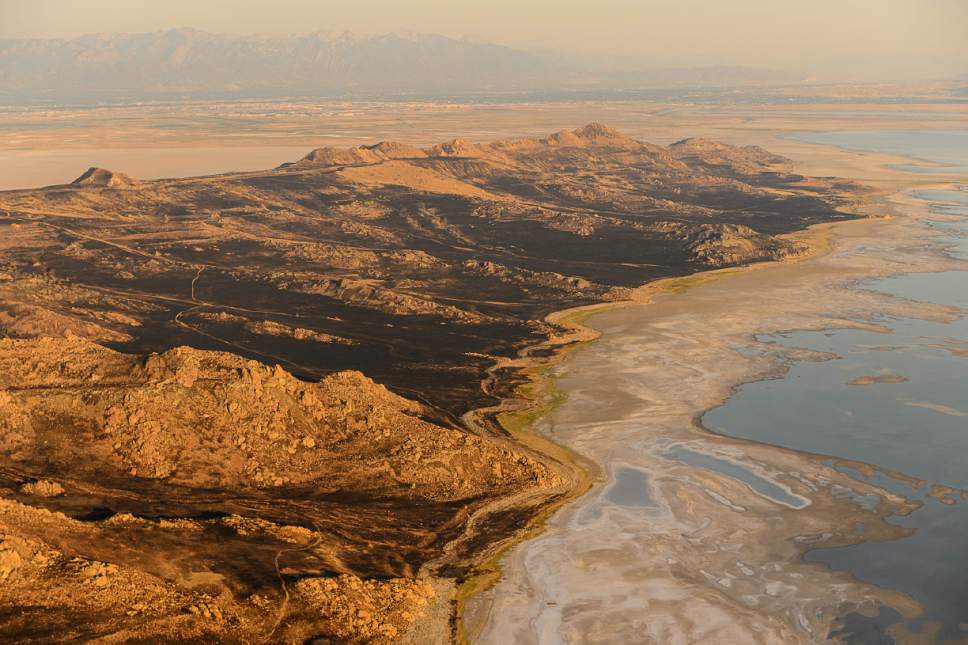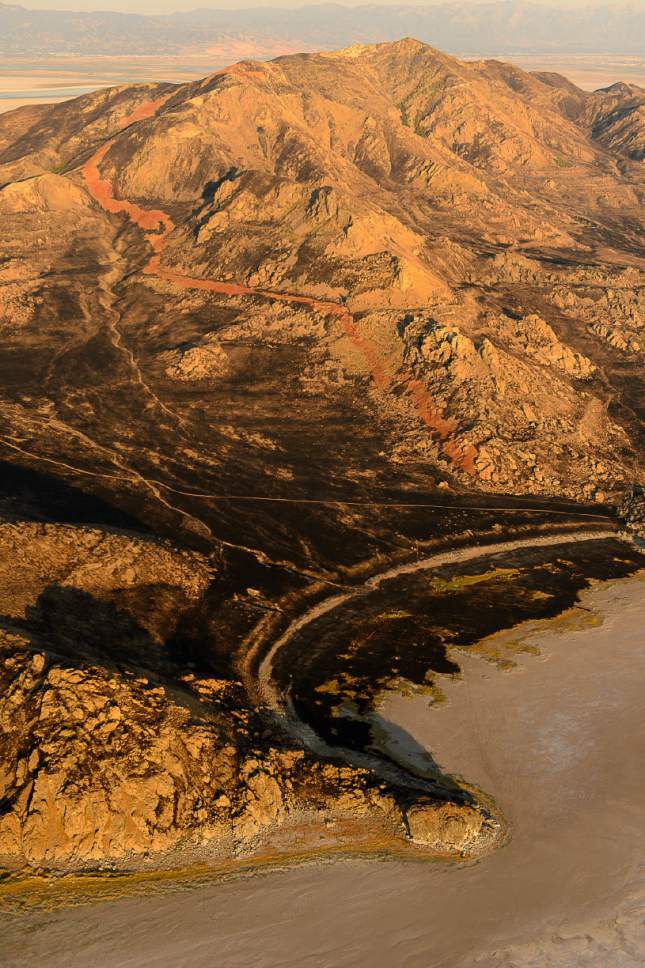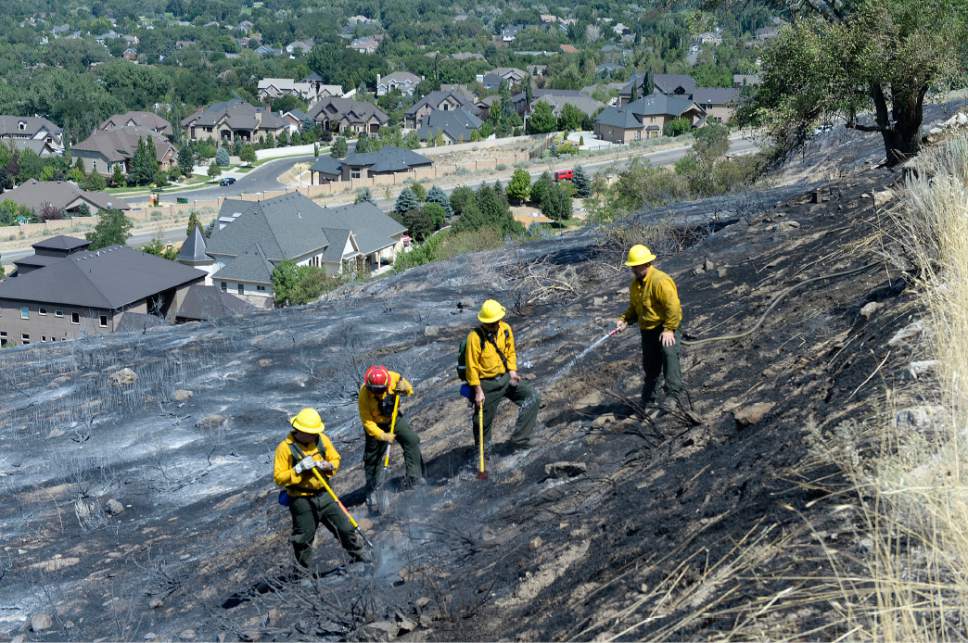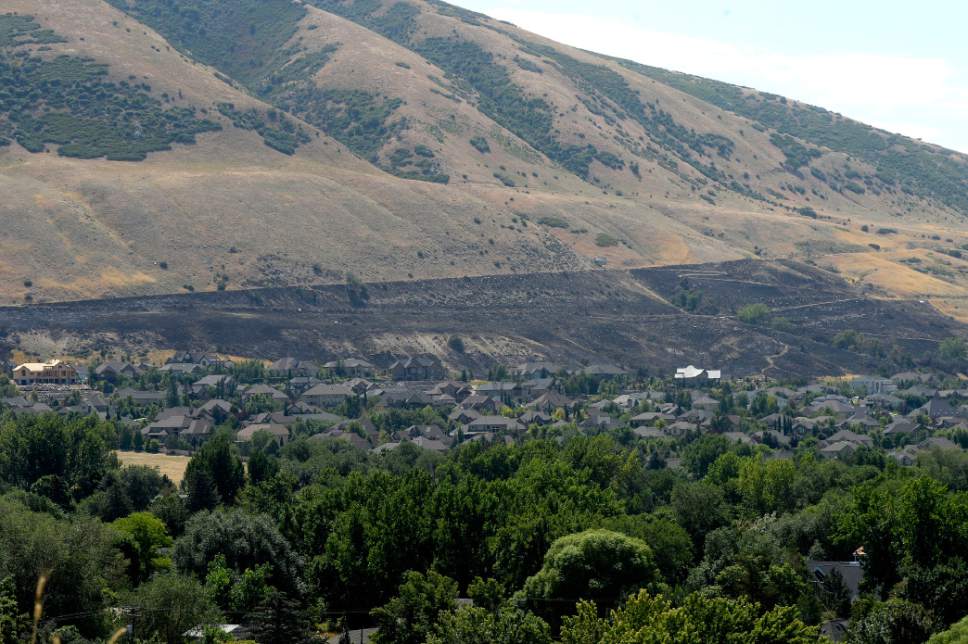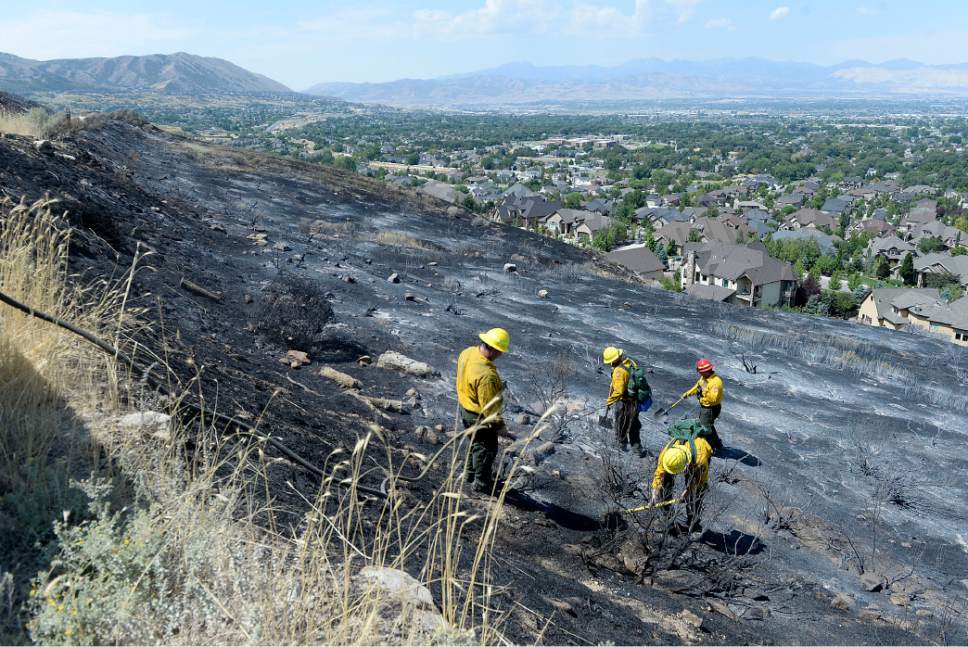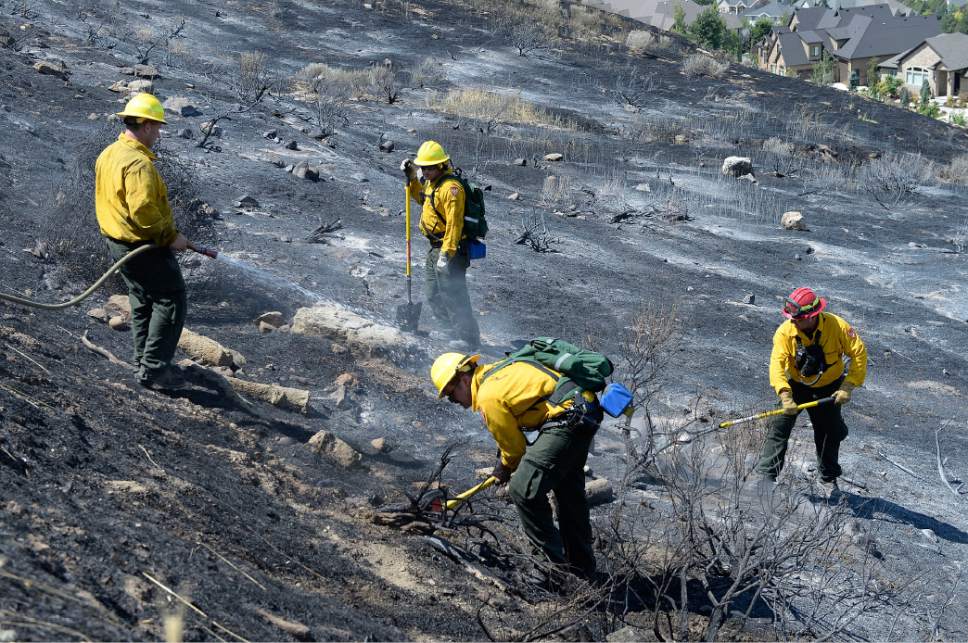This is an archived article that was published on sltrib.com in 2016, and information in the article may be outdated. It is provided only for personal research purposes and may not be reprinted.
One wildfire in Utah this season consumed twice as many acres as the total amount of land burned across the entire state last year.
Though that's more of a testament to how quiet the 2015 season was — its sum of 10,000 acres burned was the smallest in Utah since at least 2001 — this year brought a handful of large blazes, including the 20,600-acre Broad Mouth Fire in Box Elder County. There was also a return to average fire levels.
After four years of minimal wildfire activity, the 2016 season had more than 99,000 acres of burn, making it the worst since 2012 (when 415,300 acres burned). But the fires were tolerable and, in some places, healthy, scorching a total land mass the size of Detroit.
"The conditions were right for a fire to really get crazy and out of hand," said Heather O'Hanlon, of the Bureau of Land Management in Utah. "Fortunately, that did not happen for us this year."
After a long and wet spring, grasses grew tall across the state, O'Hanlon said. Vegetation then dried out in late June as temperatures increased, creating potential fields of fuel for a fire.
Northern Utah forests were also impacted by shifting climate patterns in which short and warm winters allow bark beetles to overpopulate. The bugs infect trees and produce loads of dry timber in dense areas.
Still, fire predictions for 2016 remained optimistic. State officials anticipated a mild year and got what they bargained for while other Western states sizzled this summer. (California has seen more than 400,000 acres burn, destroying homes and killing at least eight people.)
Though blazes threatened Utah homes during a Draper brush fire in early August and at the Saddle Fire in Washington County during June and July, no houses were lost this year to a wildfire. Seven structures were destroyed, including sheds and a barn, but they were not primary residences, said Jason Curry, of the Utah Division of Forestry, Fire and State Lands.
He credits early intervention, such as thinning overgrown vegetation and running prescribed burns, with keeping most of the blazes small. About $1 million allocated by the Legislature to fund these projects beginning in July, he explained, "went a long way in lowering that risk and giving us some breathing room."
Statewide estimates put the total cost of fighting wildfires at about $45 million for 2016, Curry said, which is fairly average and slightly less than what was spent in the 2012 season.
Northern Utah bore much of the burden of scorched earth, with Box Elder, Summit, Utah and Tooele counties accounting for the most wildfire acreage.
Large fires — including the West Antelope Fire that burned about half the Great Salt Lake's Antelope Island and the Briggs Fire that caused wildlife officials to relocate trout from a nearby stream — also plagued Davis and Beaver counties.
"All of the departments were busy on a regular basis," Curry said. "Almost every single day during the season we had wildfire starts."
Twitter: @CourtneyLTanner


